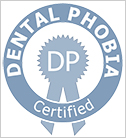Lingual Hidden Braces
Lingual braces are a modern option for aligning crooked teeth. Using the time-tested concept behind traditional fixed braces, with the advantage of being much more discrete. Lingual braces are fixed to the inside of the teeth and thus are hardly visible at all. At our Ridgway Clinic, patients in Wimbledon may take advantage of lingual braces. Dr Annika Patel, our Orthodontist, is one of the leading providers of In Bracket lingual braces in the UK.

What are Lingual Braces?
- Lingual braces are an advanced type of braces that are fixed to the back of your teeth and are thus practically invisible to the eye. No one need know you are having orthodontic treatment.
- Lingual braces have been developed primarily to solve cosmetic issues that surround highly visible braces. Traditional braces, even clear ones, can be off-putting for some people. Patients, especially adults, consider the impact on looks a big factor when deciding whether or not to undergo orthodontic treatments.
BOOK YOUR ORTHODONTIC CONSULTATION
Lingual Braces Procedure
- A dentist at our clinic will first take impressions of your teeth.
- We will use a high-resolution 3D scanner to create a digital impression of your teeth to assist with treatment planning. Every part of the brace down to the individual brackets are custom-made for your teeth, ensuring the best possible results.
- Afterwards, a laboratory will create custom-fitted brackets for the teeth.
- On the next visit, the dentist will cement the brackets on the inner side of your teeth. Just like traditional braces,the wiring and system supply constant pressure on teeth, gently easing them into their ideal position on the jaw.

Lingual Braces Wimbledon - Frequently Asked Questions
Cost Factors
Treatment Duration
The overall cost of lingual braces depends on the expected length of treatment, which can vary from patient to patient based on the complexity of the case.
Orthodontist’s Expertise
The fee charged by the orthodontist may also influence the total cost, as more experienced practitioners may command higher rates.
Average Cost Range
Typical Cost of Lingual Braces in Wimbledon and London
In London, the typical cost for lingual braces is approximately £4,000 per arch.
Payment Options
Many dental practices offer flexible payment plans, allowing patients to spread the cost over several monthly instalments. This can help make lingual braces more affordable and manageable financially.
Contact us today to discuss lingual braces treatment and explore payment options that suit your budget.
It’s essential to consult with your orthodontist to understand the specific factors that may impact the cost in your individual case. They can provide a detailed breakdown of the expenses and help you make an informed decision about pursuing lingual braces treatment.
Initial Adjustment Period
Temporary Speech Difficulties
When lingual braces are first placed, patients may experience minor speech impediments as their tongue adjusts to the new appliances inside their mouth.
Duration
This initial adjustment period typically lasts for a few weeks, during which time speech may sound slightly different or slurred.
Long-Term Impact
Adaptation
As the patient becomes accustomed to the lingual braces, speech patterns typically return to normal.
Minimal Long-Term Effects
With proper adaptation and practice, most individuals can speak clearly and naturally with lingual braces, just as they would without braces.
Strategies for Improvement
To help mitigate any speech difficulties, orthodontists may recommend the following:
– Practicing tongue twisters and reading aloud regularly
– Speaking slowly and enunciating carefully
– Consulting a speech therapist if persistent issues arise
Definition and Placement
Behind-the-Teeth Braces
Lingual braces are orthodontic appliances that are attached to the back (tongue side) of your teeth, making them virtually invisible from the front.
Customised Design
Each bracket is custom-made to fit the unique contours of your teeth, ensuring a precise and comfortable fit.
Comparison with Traditional Braces
Aesthetic Advantage
Unlike traditional braces, lingual braces are hidden from view, offering a more discreet orthodontic treatment option.
Treatment Precision
Lingual braces can often provide more precise control over tooth movement, potentially leading to more efficient treatment in some cases.
Discover the benefits of lingual braces with Ridgway Dental. Schedule a consultation to learn if this discreet orthodontic option is right for you.
While lingual braces offer unique advantages, they may not be suitable for every case. A thorough evaluation by an experienced orthodontist is necessary to determine the best treatment approach for your specific needs.
Case Suitability
Mild to Moderate Cases
Lingual braces are generally effective for treating mild to moderate orthodontic issues, including crowding, spacing, and bite problems.
Complex Cases
Some complex cases may be more challenging to treat with lingual braces and might require alternative approaches.
Limitations
Severe Overcrowding
In cases of severe overcrowding, there may not be enough space on the lingual (tongue) side of the teeth to accommodate the brackets.
Deep Overbites
Patients with deep overbites may experience more bracket breakages due to increased contact between upper and lower teeth.
Alternative Options
For cases not suitable for lingual braces, your orthodontist may recommend:
– Traditional metal braces
– Ceramic braces
– Clear aligners
Find out if lingual braces are right for your orthodontic needs with Ridgway Dental. Book a comprehensive orthodontic evaluation today.
An experienced orthodontist can assess your specific case and recommend the most appropriate treatment option to achieve your desired results.
Treatment Duration Factors
Case Complexity
The length of treatment varies depending on the severity of the orthodontic issues being addressed. Mild cases may be resolved more quickly than complex ones.
Patient Compliance
Following orthodontist instructions, maintaining good oral hygiene, and attending regular appointments can significantly impact treatment duration.
Average Treatment Times
Typical Range
On average, treatment with lingual braces can take anywhere from 18 to 36 months.
Accelerated Options
Some cases may benefit from accelerated orthodontic techniques, potentially reducing treatment time.
Progress Monitoring
Regular Check-ups
Your orthodontist will schedule periodic appointments to monitor progress and make necessary adjustments to ensure treatment stays on track.
Daily Oral Hygiene
Specialised Brushing Techniques
Use a soft-bristled toothbrush and fluoride toothpaste to clean around brackets and wires, paying extra attention to the lingual (tongue) side of your teeth.
Interdental Cleaning
Utilise interdental brushes or floss threaders to clean between teeth and around brackets effectively.
Recommended Tools
Water Flosser
A water flosser can be particularly helpful in removing food particles and plaque from hard-to-reach areas around lingual braces.
Orthodontic Wax
Keep orthodontic wax on hand to cover any irritating brackets or wires temporarily.
Dietary Considerations
Foods to Avoid
Steer clear of hard, sticky, or chewy foods that could damage your braces or get stuck in the brackets.
Initial Discomfort
Tongue Irritation
Patients may experience some tongue irritation or soreness in the first few weeks as they adjust to the presence of brackets on the lingual side of their teeth.
Speaking and Eating Adjustments
It may take some time to get used to speaking and eating with lingual braces, potentially causing temporary discomfort.
Long-Term Comfort
Customised Fit
Lingual braces are custom-made for each patient, which can lead to improved comfort compared to one-size-fits-all traditional braces.
Adaptation Period
Most patients report becoming accustomed to their lingual braces within a few weeks, after which discomfort significantly decreases.
Managing Discomfort
Orthodontic Wax
Applying orthodontic wax to irritating brackets can provide relief during the adjustment period.
Over-the-Counter Pain Relief
Mild pain relievers can help manage any discomfort, especially after adjustments.
Age Suitability
Adult Treatment
Lingual braces are an excellent option for adults seeking a discreet orthodontic solution. There is no upper age limit for this treatment.
Teenage Patients
Teenagers can also be good candidates for lingual braces, provided their teeth have fully erupted and they can maintain proper oral hygiene.
Advantages for Adults
Professional Appearance
The invisible nature of lingual braces makes them particularly appealing to adults in professional settings who wish to maintain a mature appearance.
Confidence Boost
Adults can undergo orthodontic treatment without the self-consciousness often associated with visible braces.
Considerations
Oral Health Status
Adults should have good overall oral health, including healthy gums and bone support, to be suitable candidates for lingual braces.
Commitment to Care
Proper care and maintenance of lingual braces require dedication, which many adults are well-equipped to handle.
Visibility
Lingual Braces
Completely hidden behind the teeth, offering maximum discretion.
Clear Aligners
Nearly invisible when worn, but can be slightly noticeable up close.
Treatment Effectiveness
Lingual Braces
Highly effective for complex cases, offering precise control over tooth movement.
Clear Aligners
Effective for mild to moderate cases, but may have limitations with certain tooth movements.
Removability
Lingual Braces
Fixed appliances that work continuously.
Clear Aligners
Removable, requiring patient compliance for 20-22 hours of daily wear.
Comfort and Speech
Lingual Braces
Initial adjustment period for tongue comfort and speech; generally comfortable long-term.
Clear Aligners
Minimal impact on speech; can be more comfortable initially.
Determine the best discreet orthodontic option for you with Ridgway Dental. Book a consultation to compare lingual braces and clear aligners for your specific case.
Both lingual braces and clear aligners offer discreet orthodontic treatment, but the best choice depends on your specific needs, lifestyle, and orthodontic goals.
Retention Phase
Retainer Types
After treatment, you’ll need to wear retainers to maintain your new smile. Options may include fixed lingual retainers or removable retainers.
Wear Schedule
Initially, retainers are typically worn full-time, gradually transitioning to night-time wear as directed by your orthodontist.
Final Adjustments
Fine-Tuning
Your orthodontist may make minor adjustments to ensure your bite is perfectly aligned before removing the braces.
Debonding Process
The process of removing lingual braces is generally quick and comfortable, with minimal discomfort.
Long-Term Care
Regular Check-ups
Periodic visits to your orthodontist are important to monitor the stability of your results and the condition of your retainers.
Oral Hygiene
Maintaining excellent oral hygiene habits is crucial to preserve your newly straightened smile and overall dental health.


